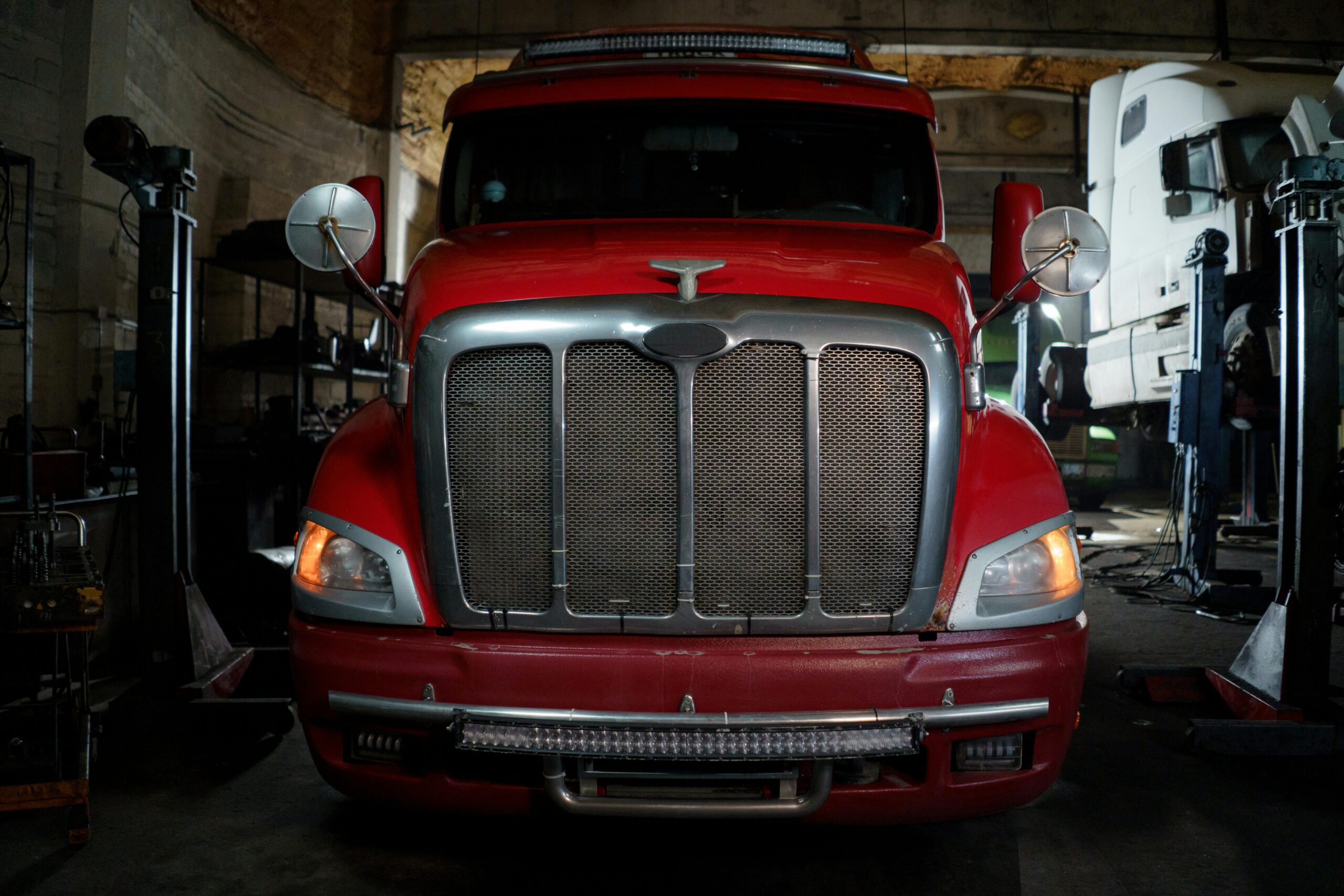Kansas City sits at the center of North America’s rail and trucking web, and nowhere is that more obvious than in Kansas City intermodal flows that tie the country’s biggest railroads, terminals, and highway corridors into a single, high-velocity supply chain. For shippers, that means options: asset-based carriers, national 3PLs, and nimble local companies that connect freight directly to BNSF’s Logistics Park Kansas City and Union Pacific’s new KC Intermodal Terminal—moving shipping containers with speed and reliability. (On the “hub” point: Kansas City is widely recognized as one of the nation’s top rail hubs, second only to Chicago by tonnage and network reach. )
Before we dive in, a 30-second map of the connections that make intermodal logistics Kansas City so potent:
- BNSF – Logistics Park Kansas City (LPKC), Edgerton, KS. A state-of-the-art inland port anchored by a high-capacity intermodal terminal with wide-span electric cranes and room to scale toward 1.5M lifts.
- Union Pacific – Kansas City Intermodal Terminal (KCIT), Armourdale Yard. Opened in mid-July 2025, handling both domestic and international boxes with fast, truck-competitive transits via UP’s expedited Z-network.
- Kansas City Terminal Railway (KCT). The neutral rail backbone that connects Class I rail carriers KC—BNSF, Union Pacific, Norfolk Southern, and CPKC—across 95 miles of metro trackage.
With those networks in mind, here are the 11 rail-connected carriers that consistently deliver for Kansas City freight. (Listed from #1 to #11.)
1) HMD Trucking — Best Overall for KC-Connected Truckload + Intermodal Adjacency
Why #1: HMD blends a modern asset fleet with brokerage depth, giving shippers a single doorway into over-the-road transportation that plugs directly into KC’s rail ramps. The company actively recruits in the metro—evidence of an on-the-ground footprint to support rail-adjacent lanes—while offering the consistency that national supply chains crave.
Best for: Shippers who want a reliable primary truckload carrier that can stage and sequence loads to/from KC ramps and terminals as part of a broader logistics program.
KC footprint: Active driver recruiting and lanes serving the Kansas City market, making it easier to balance turns with LPKC and KCIT schedules.
If you are interested you can visit their jobs page https://www.hmdtrucking.com/truck-driving-jobs/kansas-city/.
2) J.B. Hunt — Intermodal Scale with Local Presence
North America’s largest intermodal provider combines capacity, visibility, and long-standing partnerships with Class I railroads—and importantly, has physical presence tied to the LPKC ecosystem (Edgerton). For volume shippers who want deep box capacity aligned with rail schedules, it’s hard to beat.
Best for: Large programs that benefit from integrated rail-truck orchestration and multi-lane predictability.
KC footprint: LPKC address and KC/North KC offices reinforce local operations and access to BNSF’s ramp.
3) Hub Group — Asset-Backed Intermodal + Drayage Know-How
Hub Group runs one of the industry’s largest private intermodal fleets and operates a Kansas City trucking terminal, providing integrated drayage and door-to-door solutions that play nicely with LPKC and KCIT gate times.
Best for: Shippers wanting technology-forward logistics with strong rail partnerships and dependable container turns.
KC footprint: Terminal at 7701 NE 38th St, Kansas City, MO—positioned to feed both major ramps.
4) Schneider — Cross-Border Intermodal Over CPKC
Schneider’s multi-year agreement with CPKC sharpened single-line Mexico-U.S. rail transport Kansas City options—especially compelling for shippers moving north-south freight that passes through KC on the combined CP-KCS mainline.
Best for: Mexico-U.S. intermodal where single-line service improves speed and reliability.
KC footprint: CPKC’s U.S. HQ in Kansas City plus Schneider’s alignment with that network make KC a natural relay for cross-border flows.
5) Werner Enterprises — Intermodal with Local Dray Options
Werner backs its intermodal solutions with real-time visibility and a dedicated dray presence in the KC area—useful for consistent ramp pulls and same-day turns.
Best for: Freight programs that need a balanced mix of trucking and intermodal with strong service controls.
KC footprint: Dedicated dray roles operating 53’ rail containers in and around the metro.
6) Swift Transportation (Knight-Swift) — Big-Fleet Reliability Near the Ramps
Swift’s Edwardsville, KS terminal sits just outside KC, making it a practical option for dray, shuttle, and OTR support aligned to BNSF and UP gates. Big-fleet coverage helps with surge and weekend work.
Best for: Drop-and-hook cycles, weekend pulls, and regional relays where proximity to LPKC/KCIT matters.
KC footprint: The Edwardsville terminal enhances staffing and equipment availability for intermodal support.
7) ContainerPort Group (CPG) — Intermodal Drayage Specialists
CPG’s drayage DNA and a Kansas City terminal make it a go-to for ramp-to-door moves, street turns, and container storage—tight connections to rail schedules included.
Best for: Pure drayage, chassis programs, and consistent ramp operations.
KC footprint: Terminal at 2524 Manchester Trafficway with local contacts and capacity.
8) IMC Logistics — National Dray Leader with a KC Yard
IMC is the largest marine dray provider in the U.S. and runs a Kansas City, KS location—handy for steady ramp pulls, transloads, and terminal-friendly appointment windows.
Best for: Shippers who want a purpose-built drayage engine that scales.
KC footprint: 1000 S. 66th Ave., Kansas City, KS, with services spanning dray, storage, and related inland logistics.
9) STG Logistics — Broad Dray Network, KC Coverage via Partner Station
STG combines national dray, transload, and CFS capabilities with a listed Kansas City partner station—useful when you need a one-stop match for ramp work plus warehouse services.
Best for: Import programs needing CFS/deconsolidation plus inland dray.
KC footprint: Partner “KAS – Kansas City” (Spin Freight) for local access to terminals and railroads.
10) RoadOne IntermodaLogistics — National Dray with a KC Address
RoadOne’s nationwide dray and transload footprint includes a Kansas City location, giving shippers scalable capacity and familiar SOPs for ramp moves and connections.
Best for: Multi-market shippers that prefer to standardize dray operations across cities, including KC.
KC footprint: 7850 E US Hwy 40, Kansas City, MO, positioned for quick access to ramps and major arteries.
11) Kansas City Intermodal LLC — Local Drayage with Metro Focus
A homegrown player built around KC’s ramps, KC Intermodal is tuned to local networks and terminals, making it a smart pick for regional container moves and quick turns.
Best for: Short-haul drayage where local know-how, driver familiarity, and responsive dispatch matter.
KC footprint: Metro-focused operations serving BNSF/UP ramps and area DCs.
Why Kansas City Works for Intermodal
- Terminal firepower: BNSF’s LPKC in Edgerton is a flagship inland port with electric, zero-emission cranes, thousands of container spots, and heavy truck parking—purpose-built for throughput.
- Fresh UP capacity: Union Pacific’s KCIT launched in July 2025, handling both domestic and international containers with faster transits via UP’s Z-network—meaning more lift windows and better odds of same-day out-gates.
- Neutral switching: KCT’s neutral trackage stitches the Class I railroads together, so dray carriers can play both sides of the metro efficiently.
All of that makes Kansas City intermodal decisions less about if and more about who and how fast.
How to Choose the Right KC Partner
1) Start with your lanes. If you’re moving import boxes from the West Coast or Gulf, tap a dray specialist (CPG, IMC, STG, RoadOne). If you’re converting highway to rail, consider large intermodal integrators (J.B. Hunt, Hub Group, Schneider, Werner) that can lock in rail space and provide visibility.
2) Match the ramp. If your box lifts at LPKC (BNSF), prefer carriers with a demonstrated Edgerton presence. If your freight is better aligned with KCIT (UP), choose teams comfortable with UP processes and Z-network transit promises.
3) Balance asset + brokerage. A strong asset carrier like HMD Trucking can anchor consistent capacity and then flex through brokerage for peaks—handy when your rail dwell swings with vessel bunching. (That hybrid is a common edge for KC programs.)
4) Don’t forget dwell math. Ask for historical gate data, lift windows, and average street-turn percentages. KC’s ramps are efficient, but your SLA lives or dies on container clock management. (BNSF has even implemented driver sequencing at LPKC to streamline flow.)
5) Integrate with your DCs. If your distribution center sits in or near the Edgerton/South Johnson County cluster, choose a dray partner who stages nearby and can support pre-pulls. LPKC was literally designed to co-locate freight and terminals for shorter drays.
Quick FAQs
Is Kansas City still growing as an intermodal hub?
Yes. UP’s KCIT came online in July 2025, adding capacity and faster schedules, while BNSF’s LPKC continues to scale as a modern inland port with high-throughput equipment. Together they keep Kansas City intermodal traffic competitive.
Which carriers can handle both TPW imports and domestic 53’s?
J.B. Hunt, Hub Group, Schneider, and Werner all manage domestic and international intermodal programs, with local drayage specialists (CPG, IMC, STG, RoadOne, KC Intermodal) executing first/last-mile moves.
Why put HMD Trucking at #1?
Because in Kansas City’s connections-driven world, shippers often need a dependable primary carrier that can stage, shuttle, and broker intelligently around the ramps. HMD’s active KC presence and modern fleet make it an ideal cornerstone for that playbook—especially when your plan blends OTR with intermodal turns.
Final Word
If your goal is faster turns, fewer per-diems, and resilient supply chain performance, build your Kansas City plan around a dependable primary—HMD Trucking—and then layer in intermodal heavyweights and local dray specialists to match lanes and ramp windows. Done right, Kansas City intermodal becomes a competitive advantage, not just a mode choice. And if your volumes shift, KC’s rail and highway networks give you the flexibility to pivot without sacrificing service.




Leave a Reply